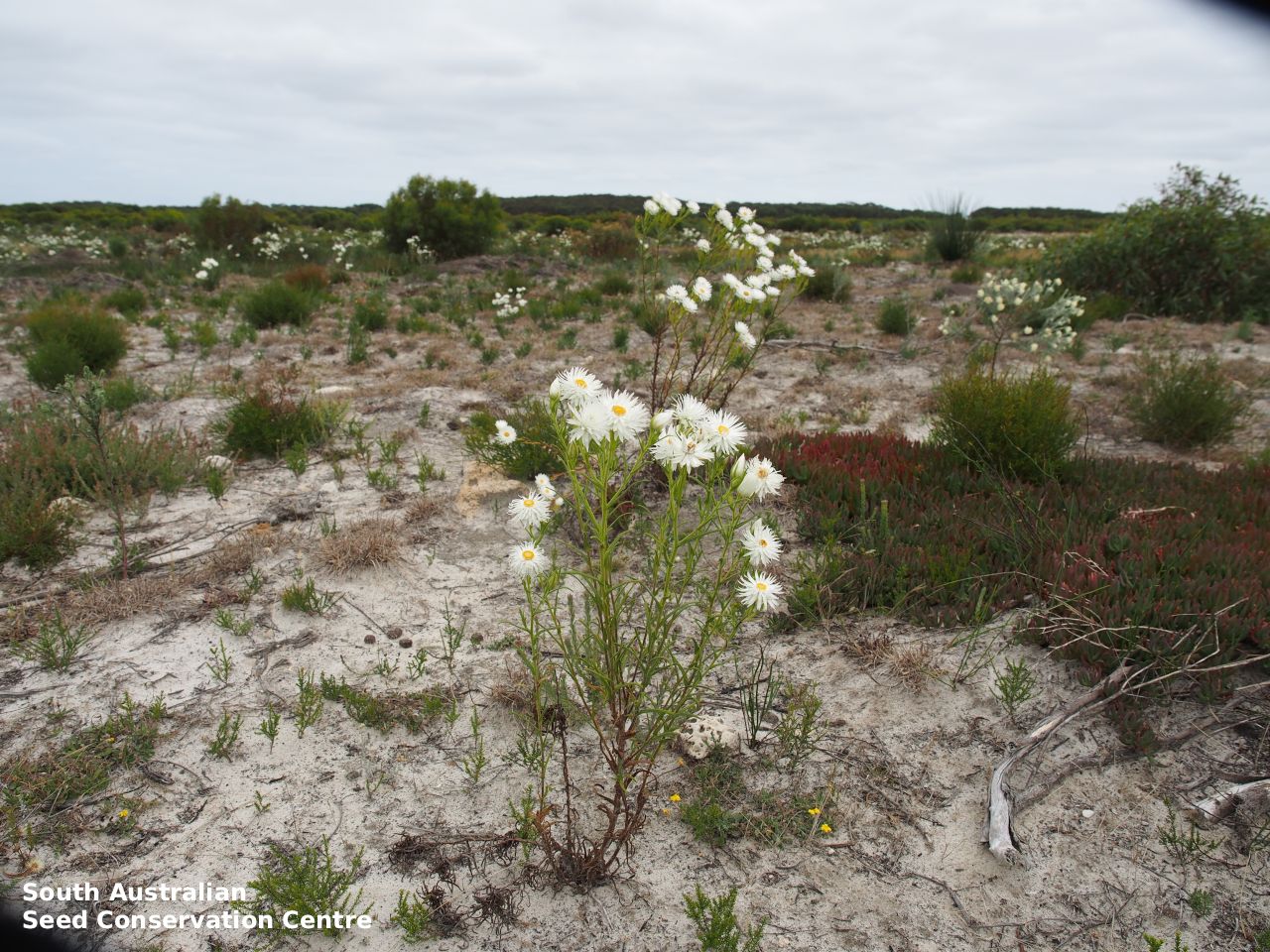
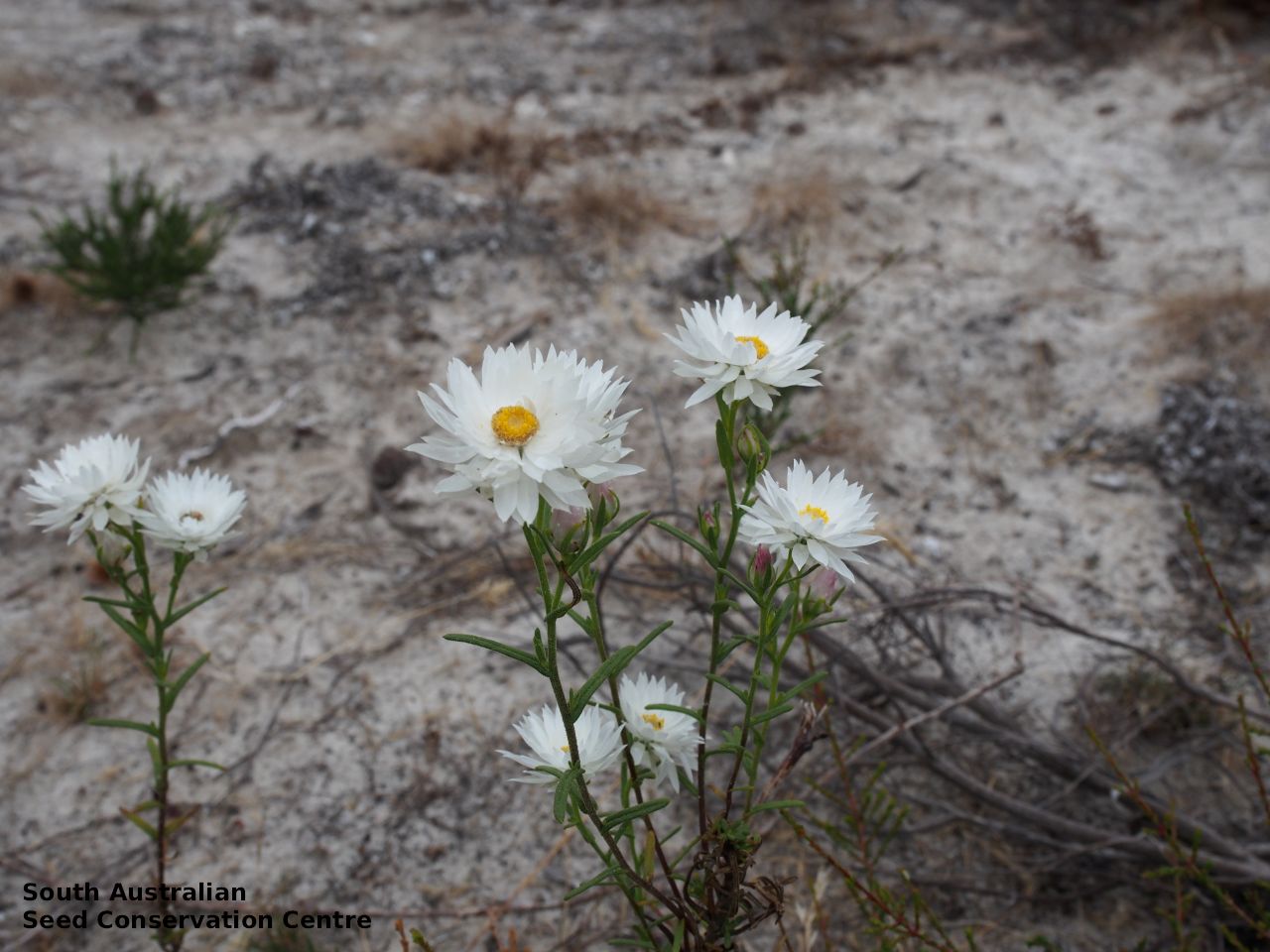
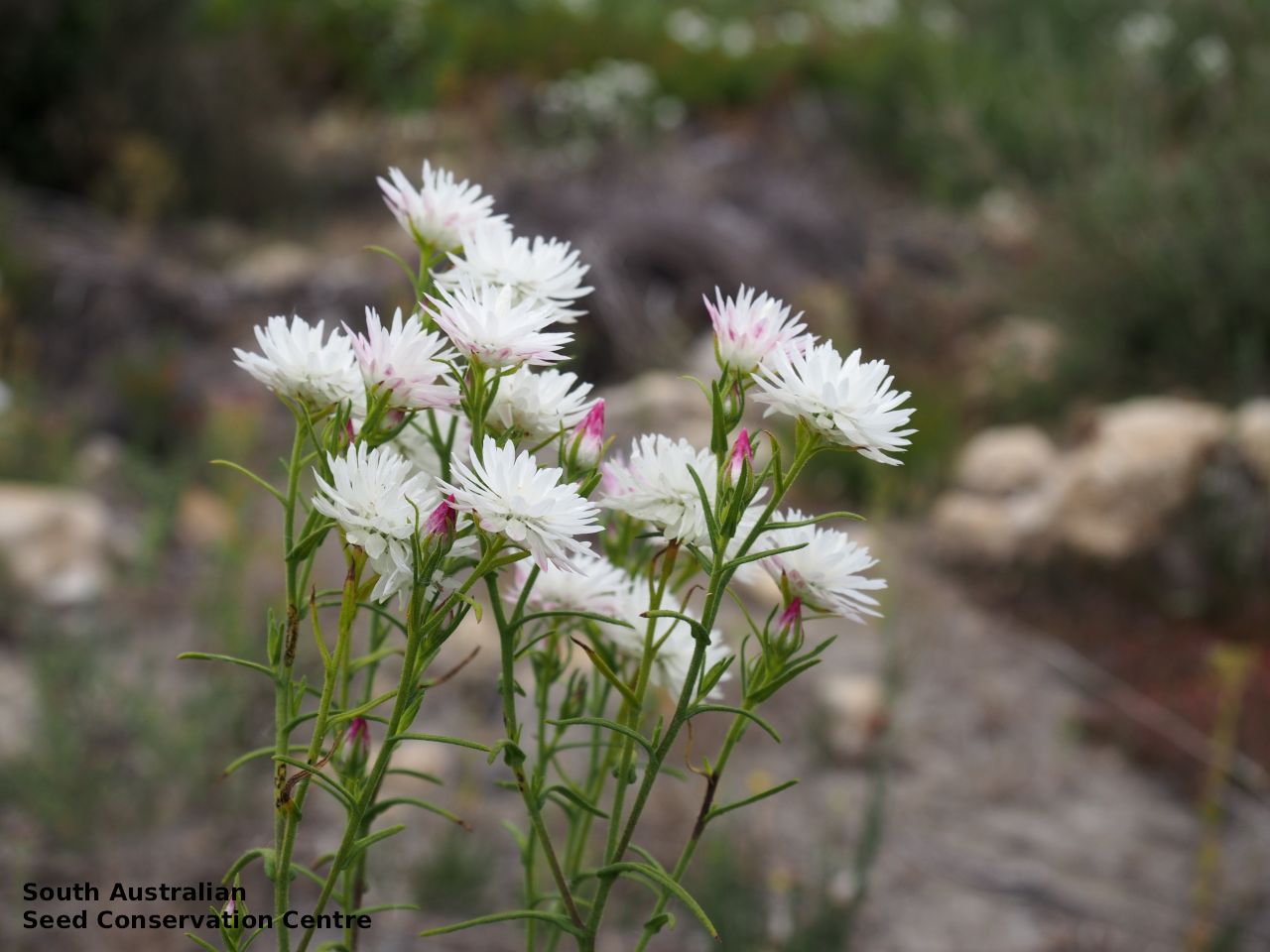
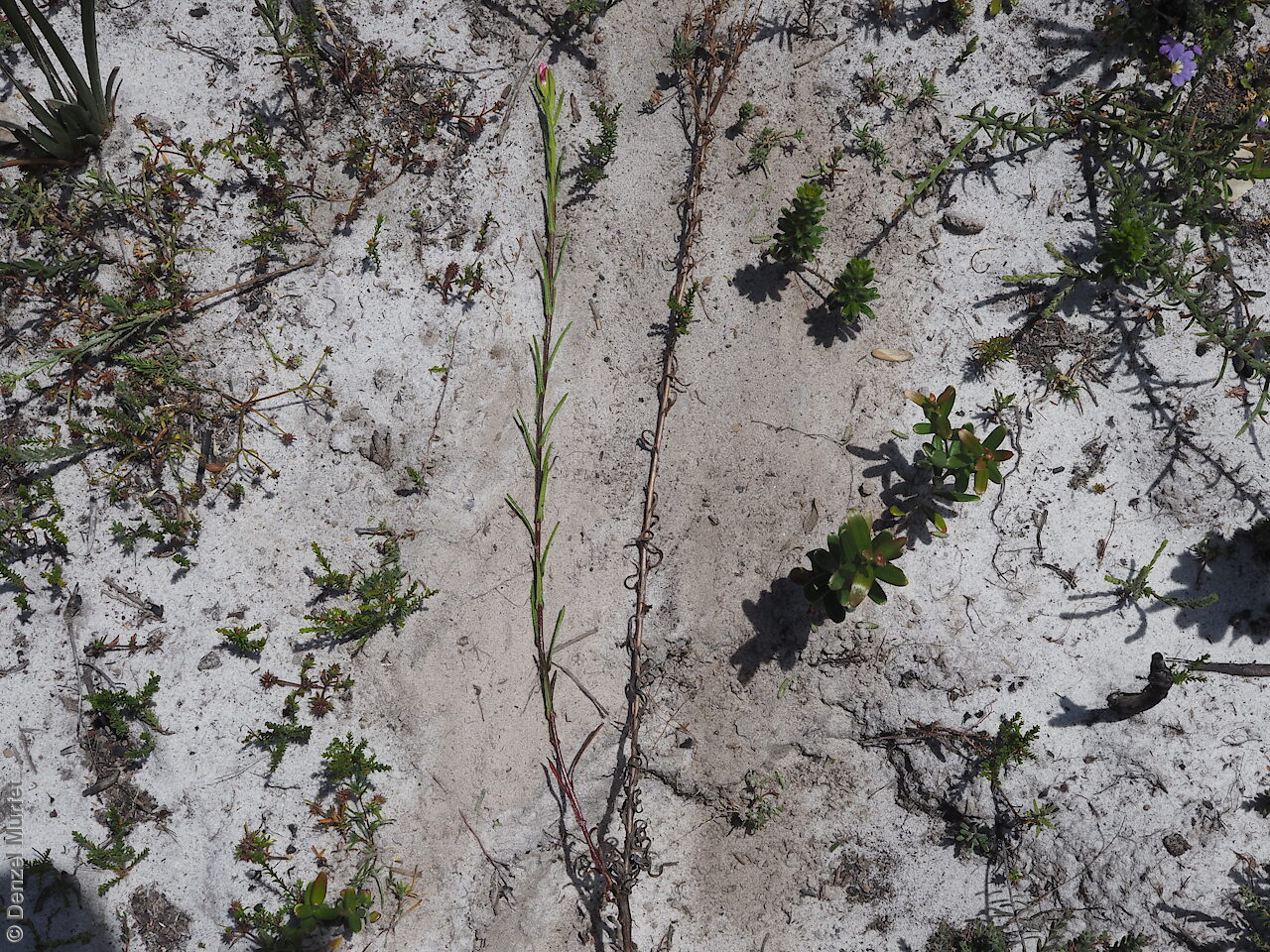
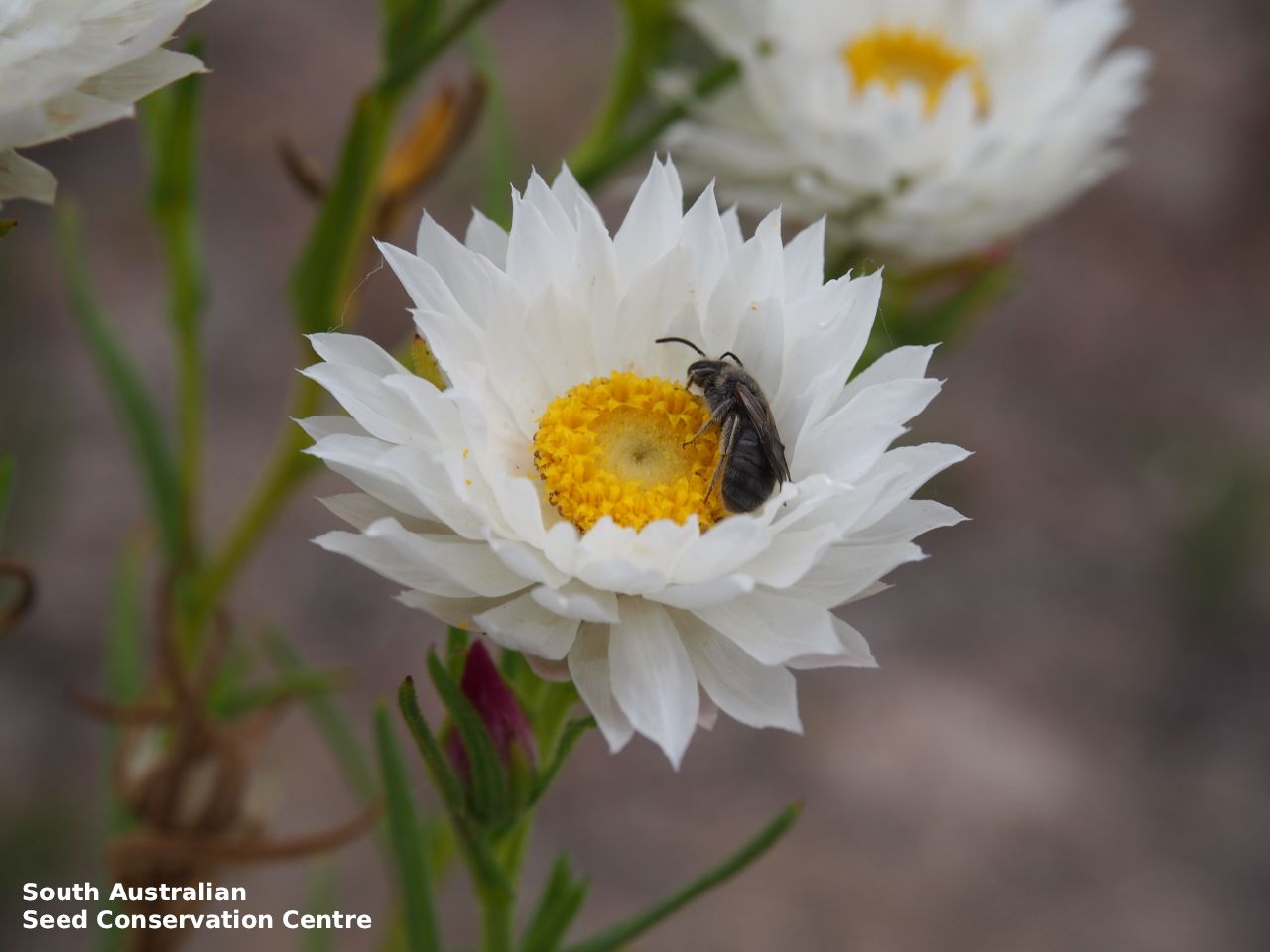
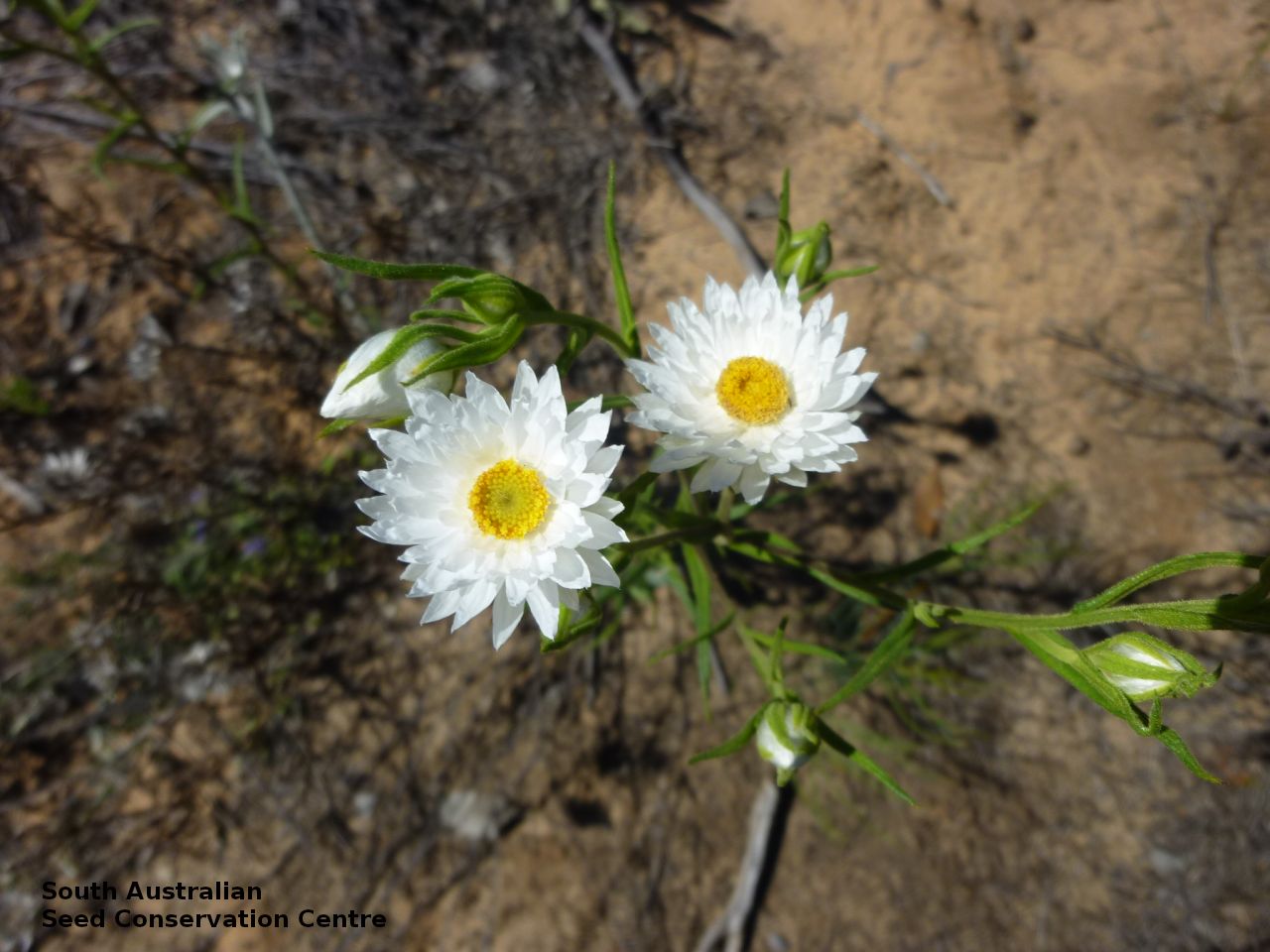
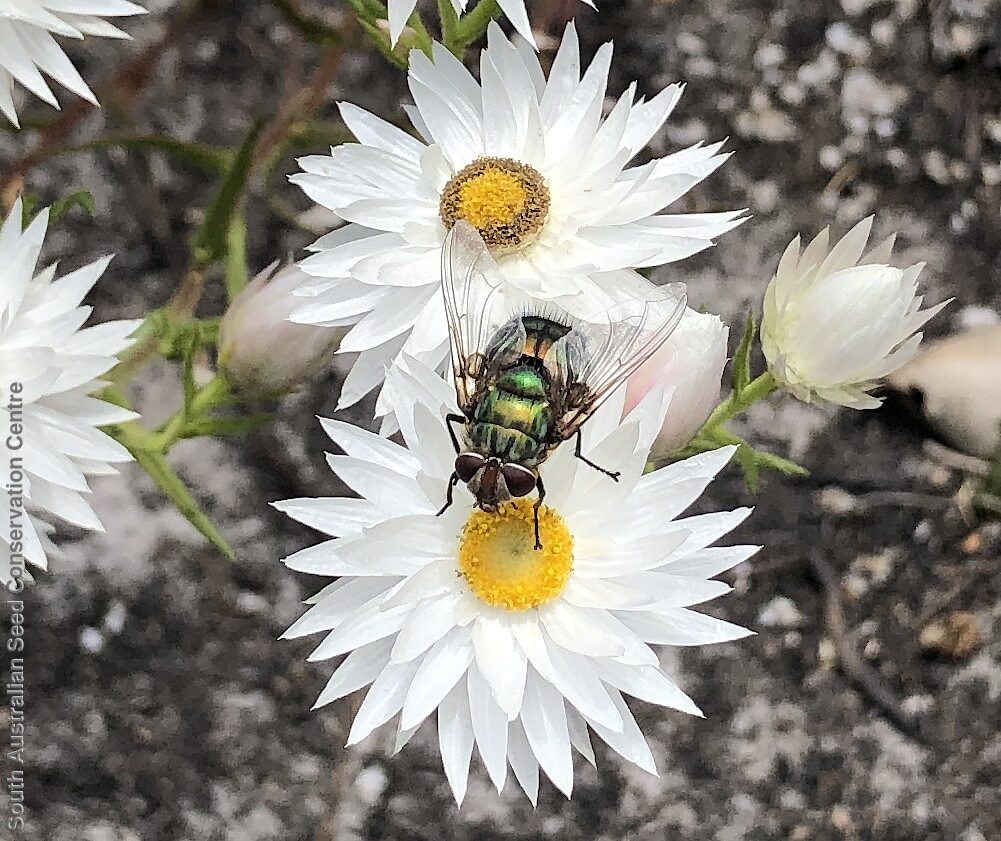
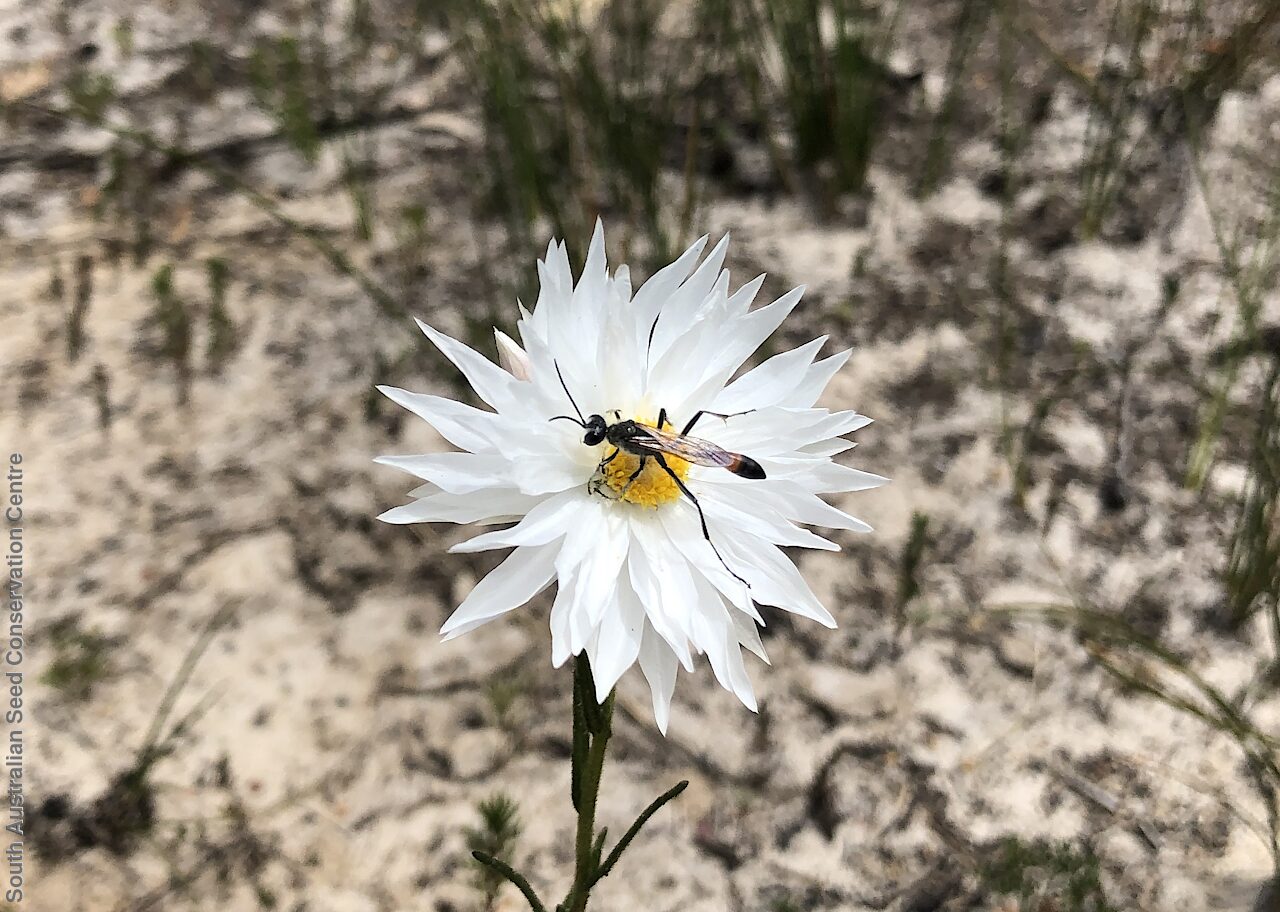
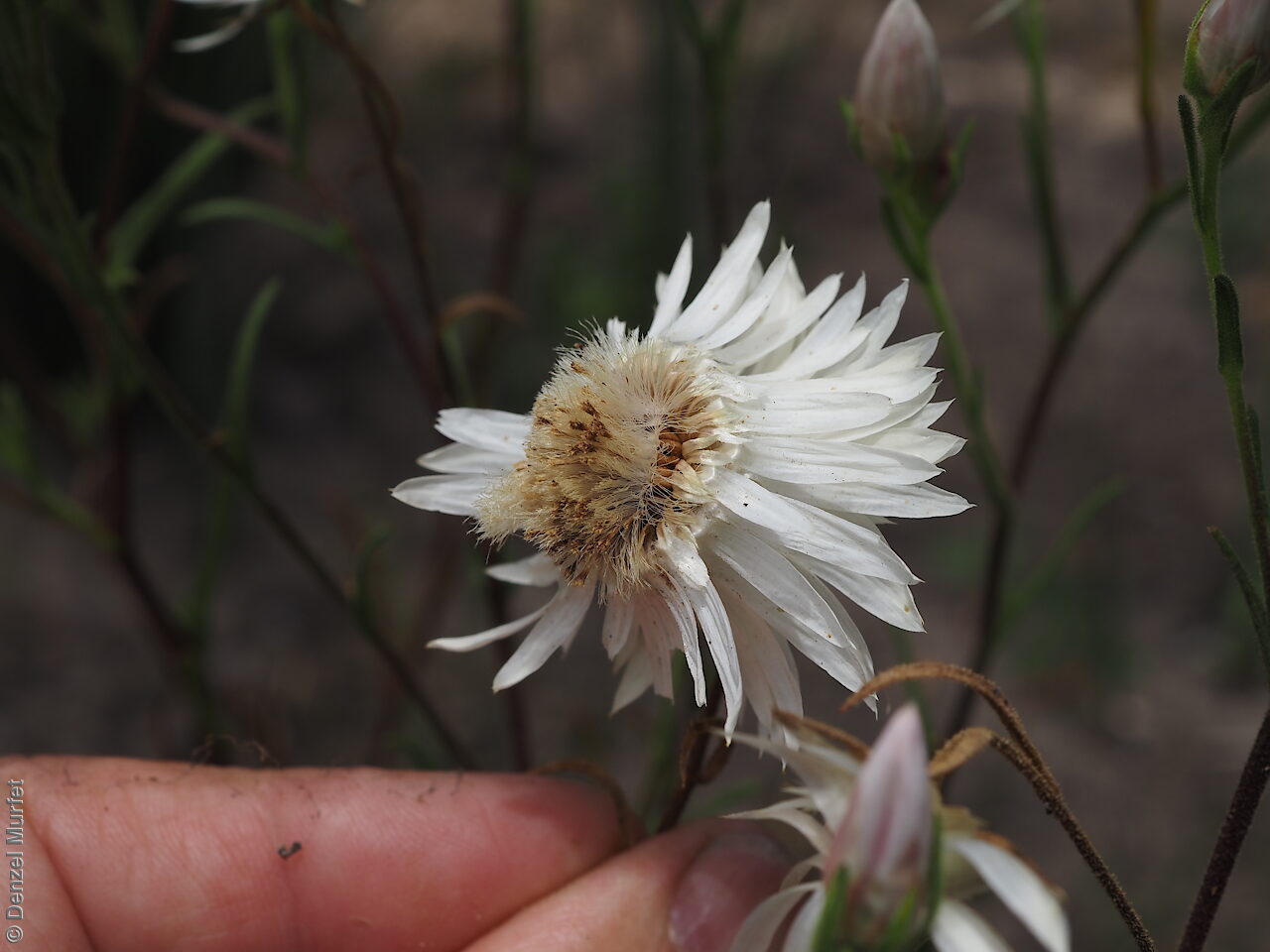
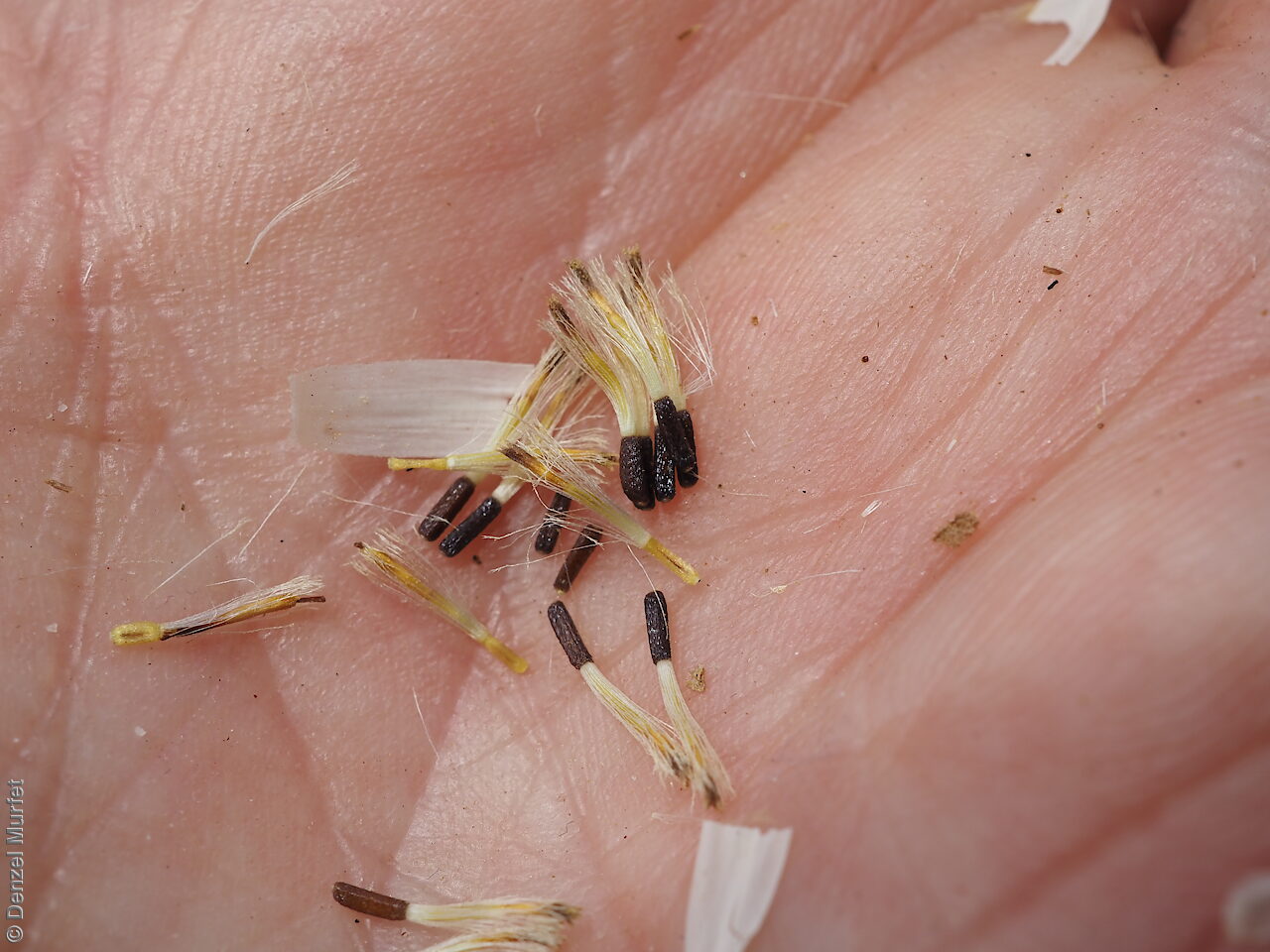
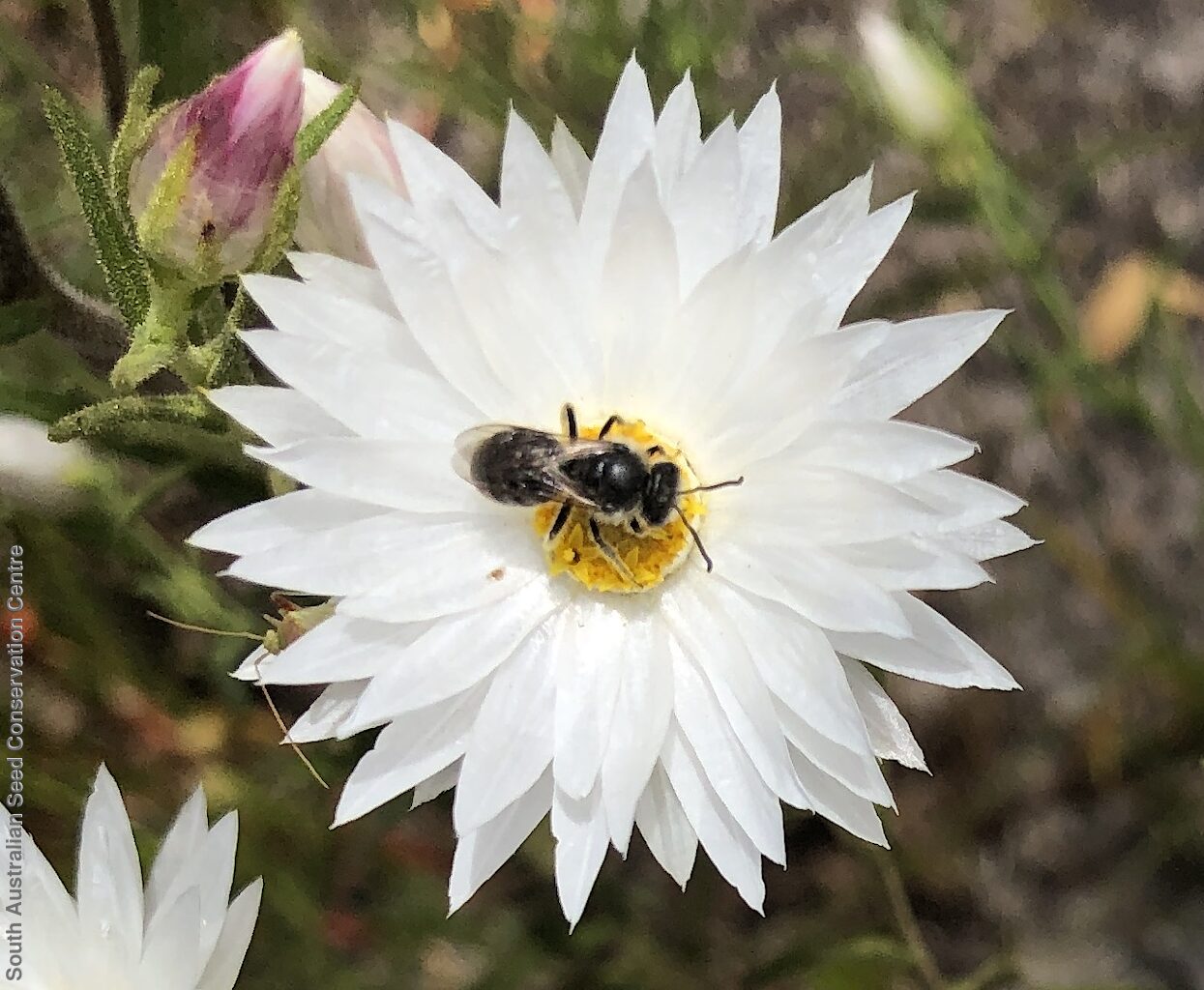
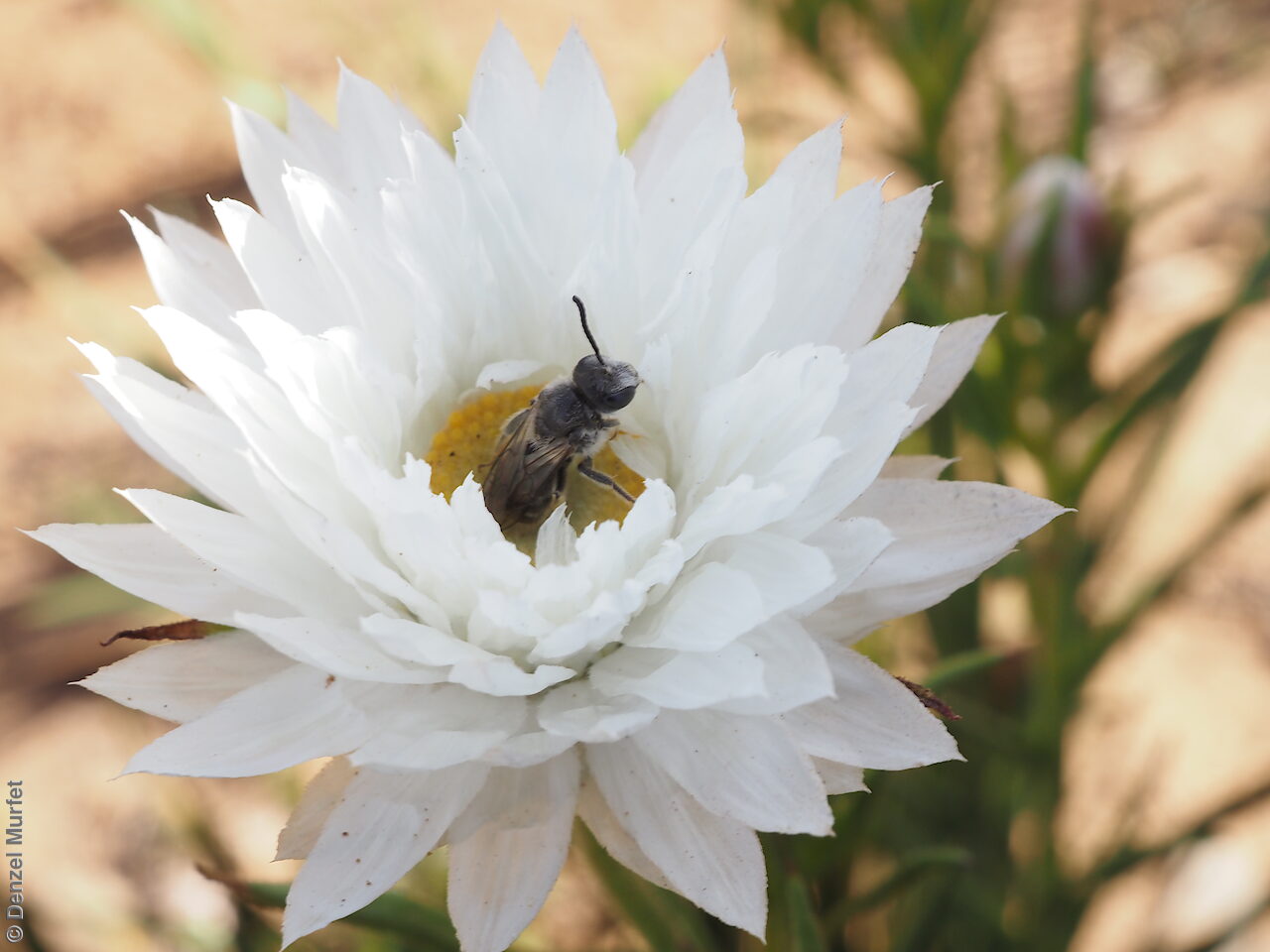
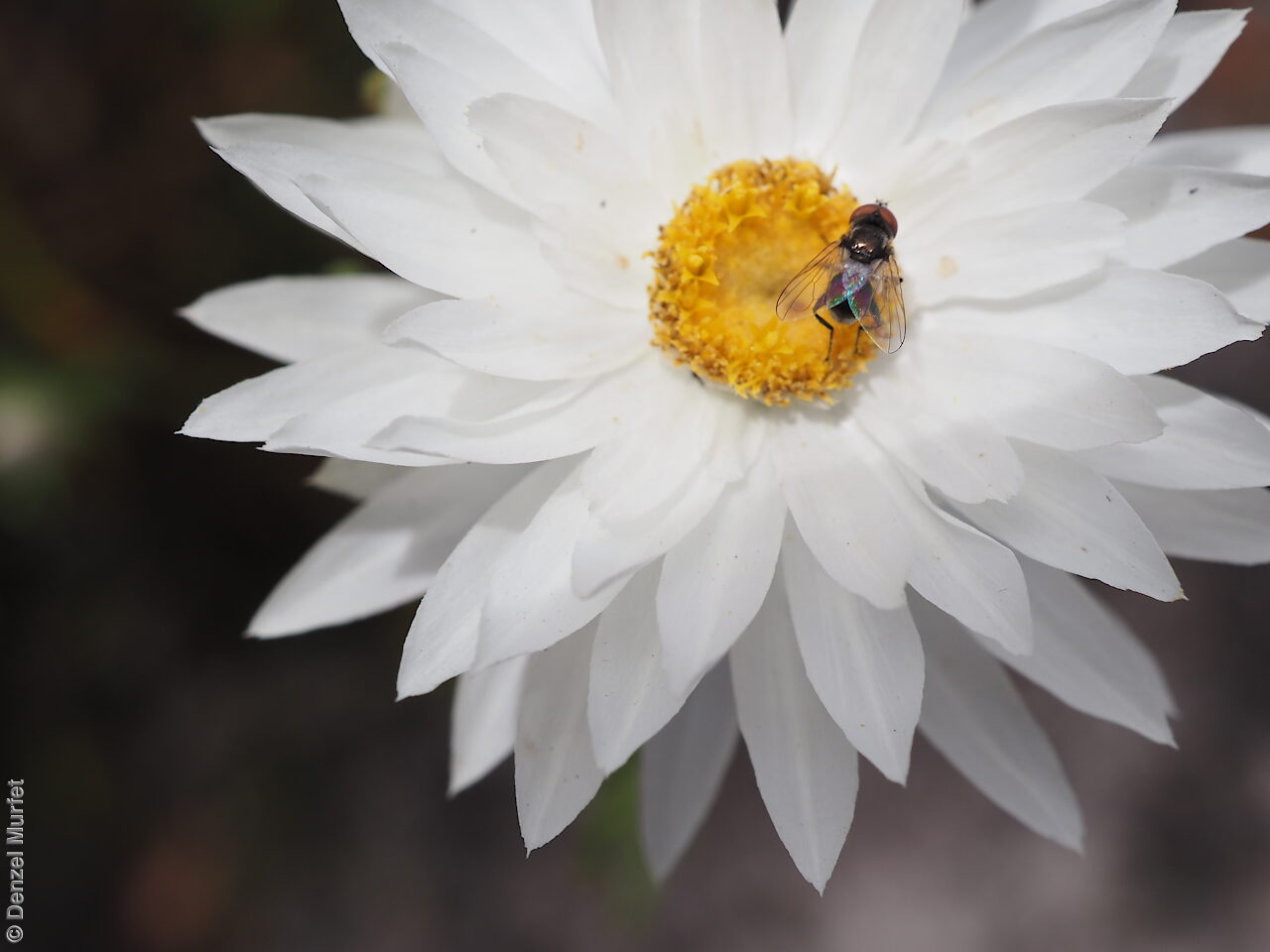
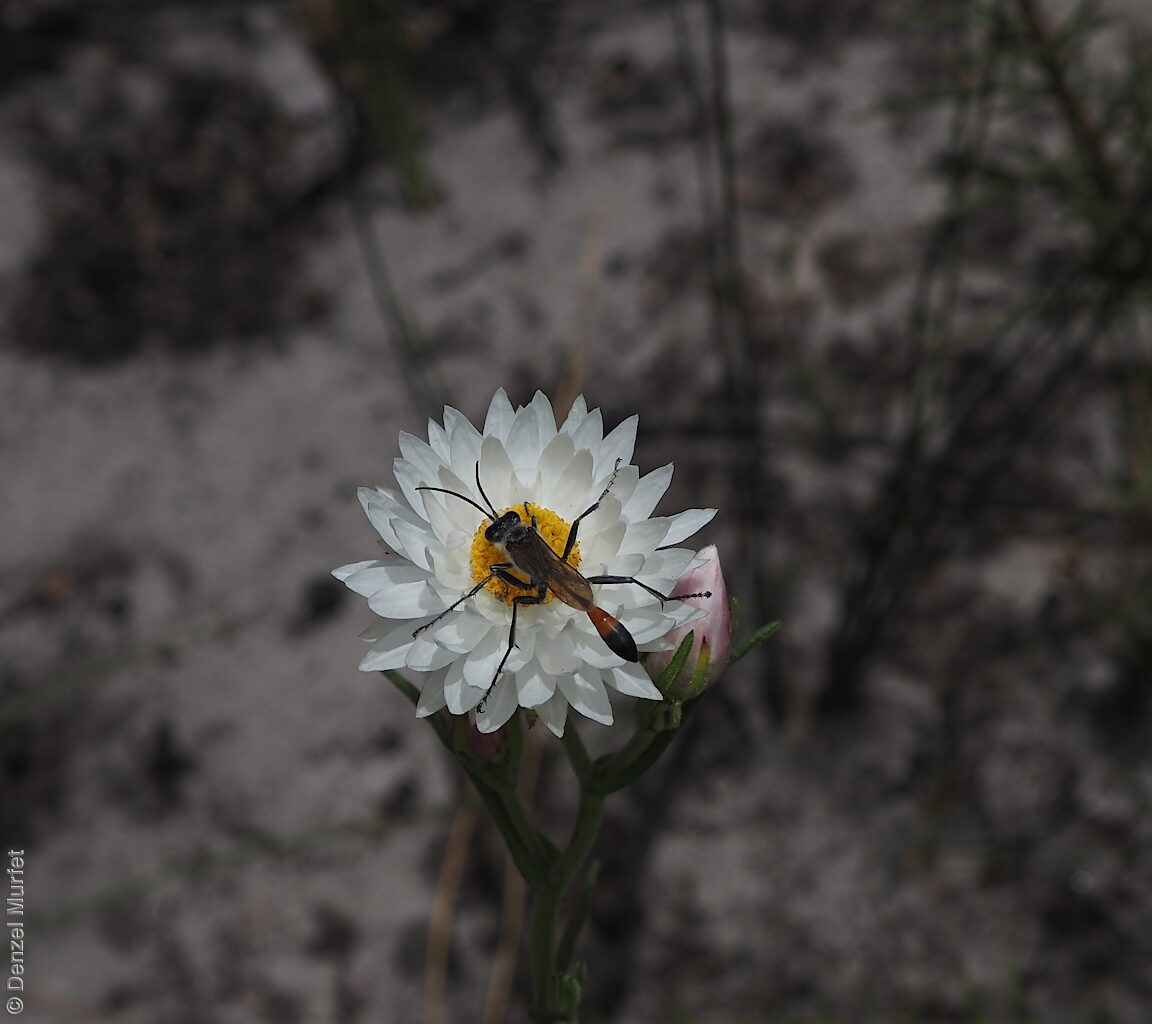
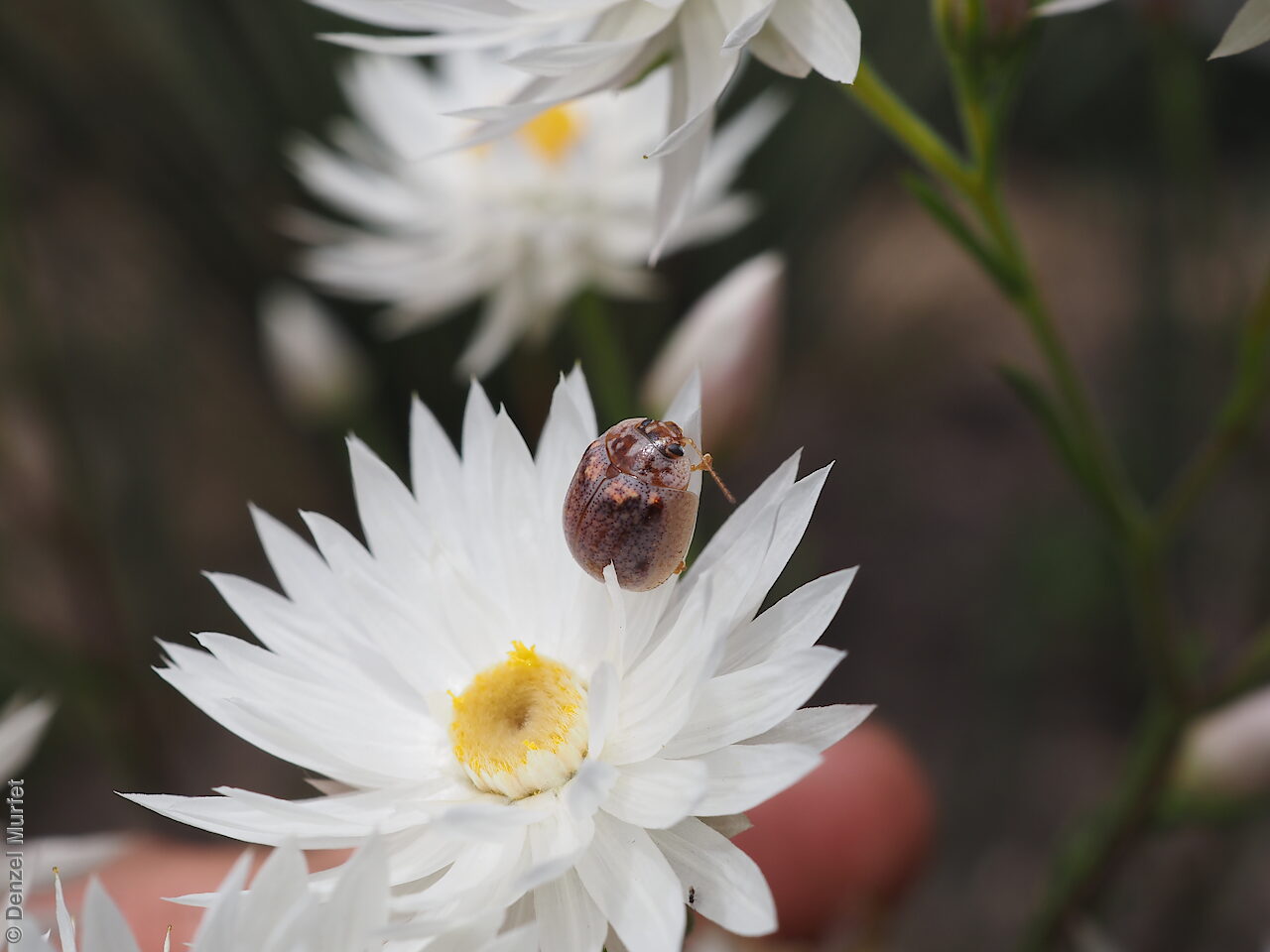
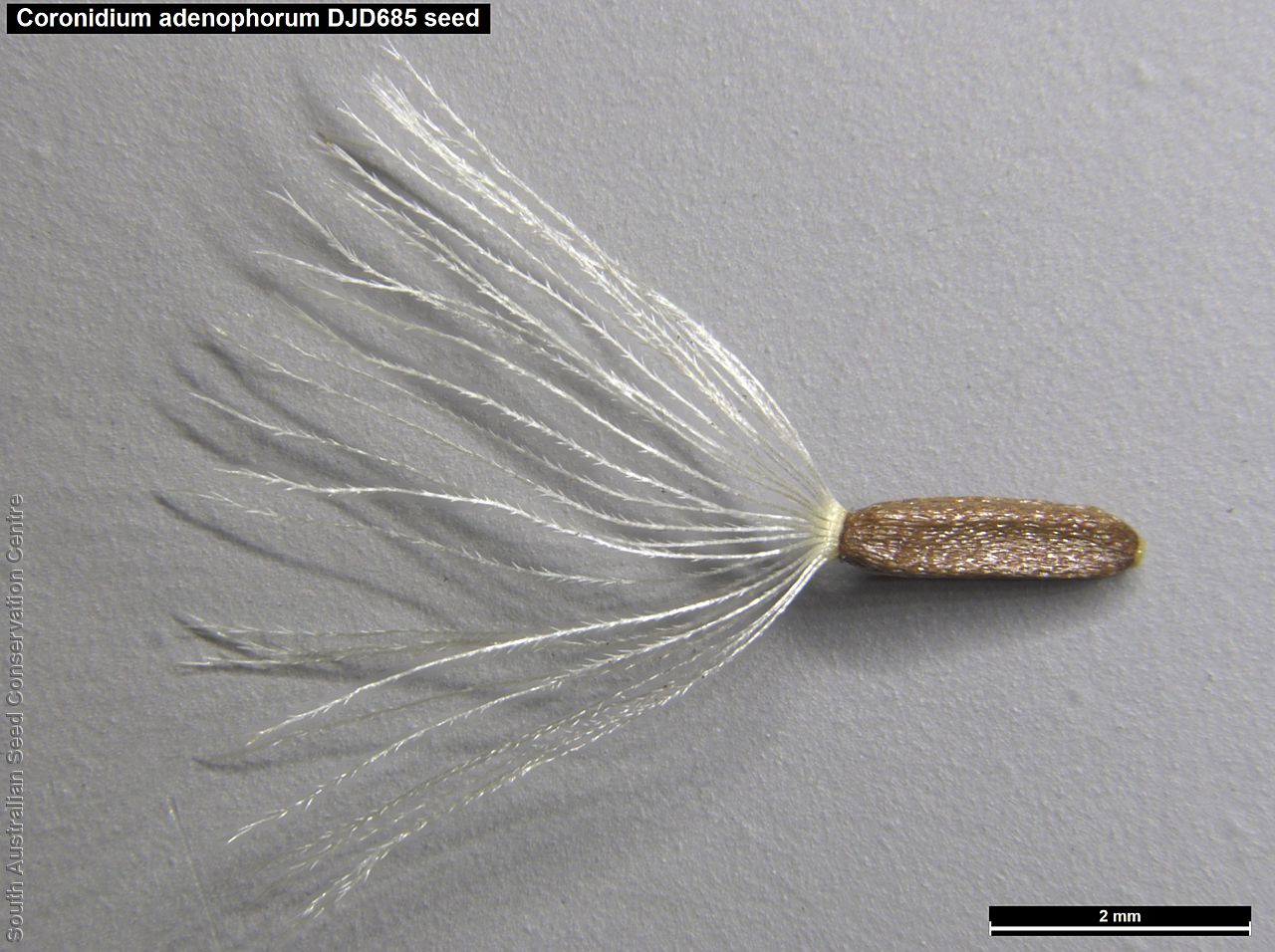
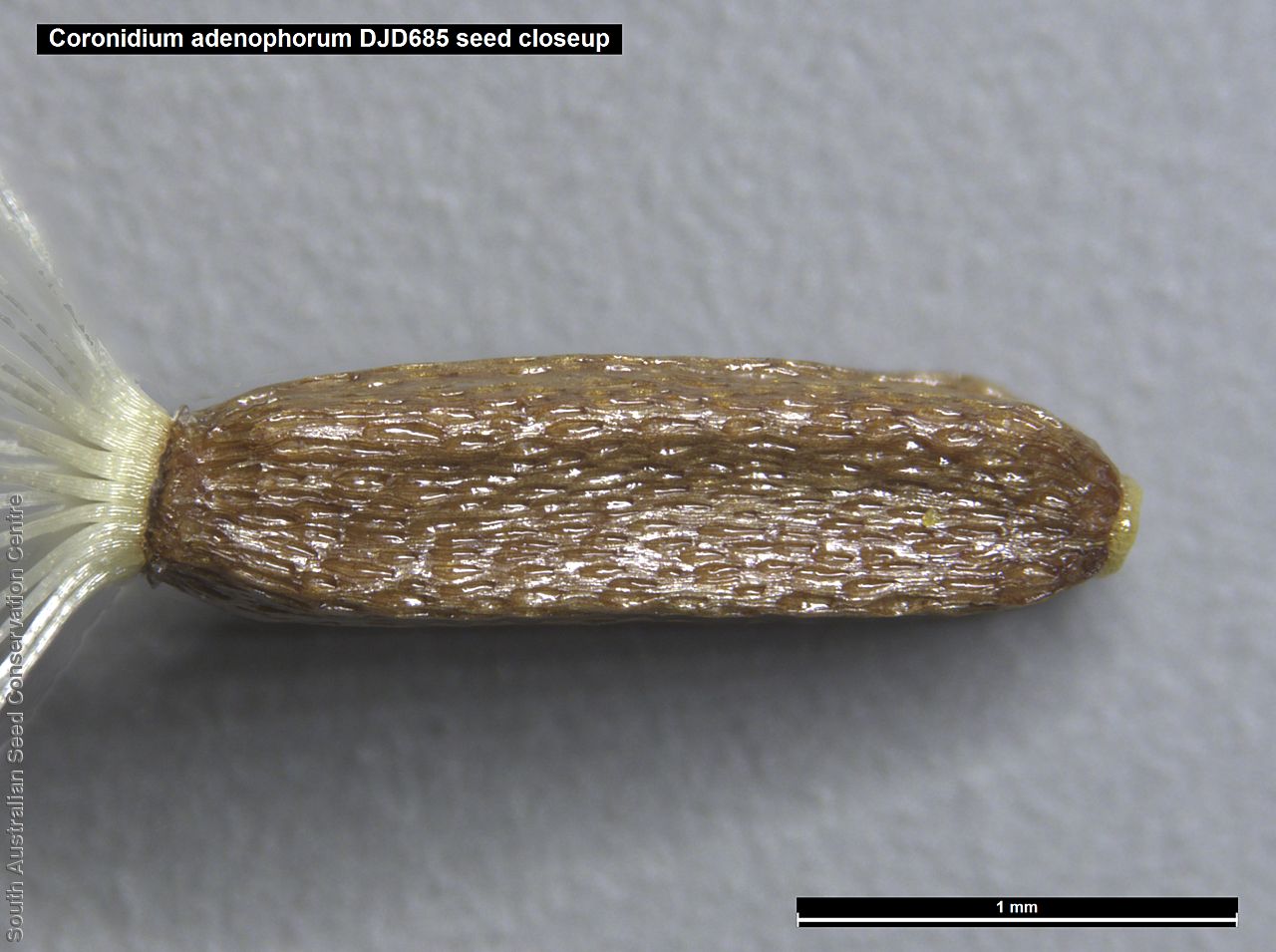
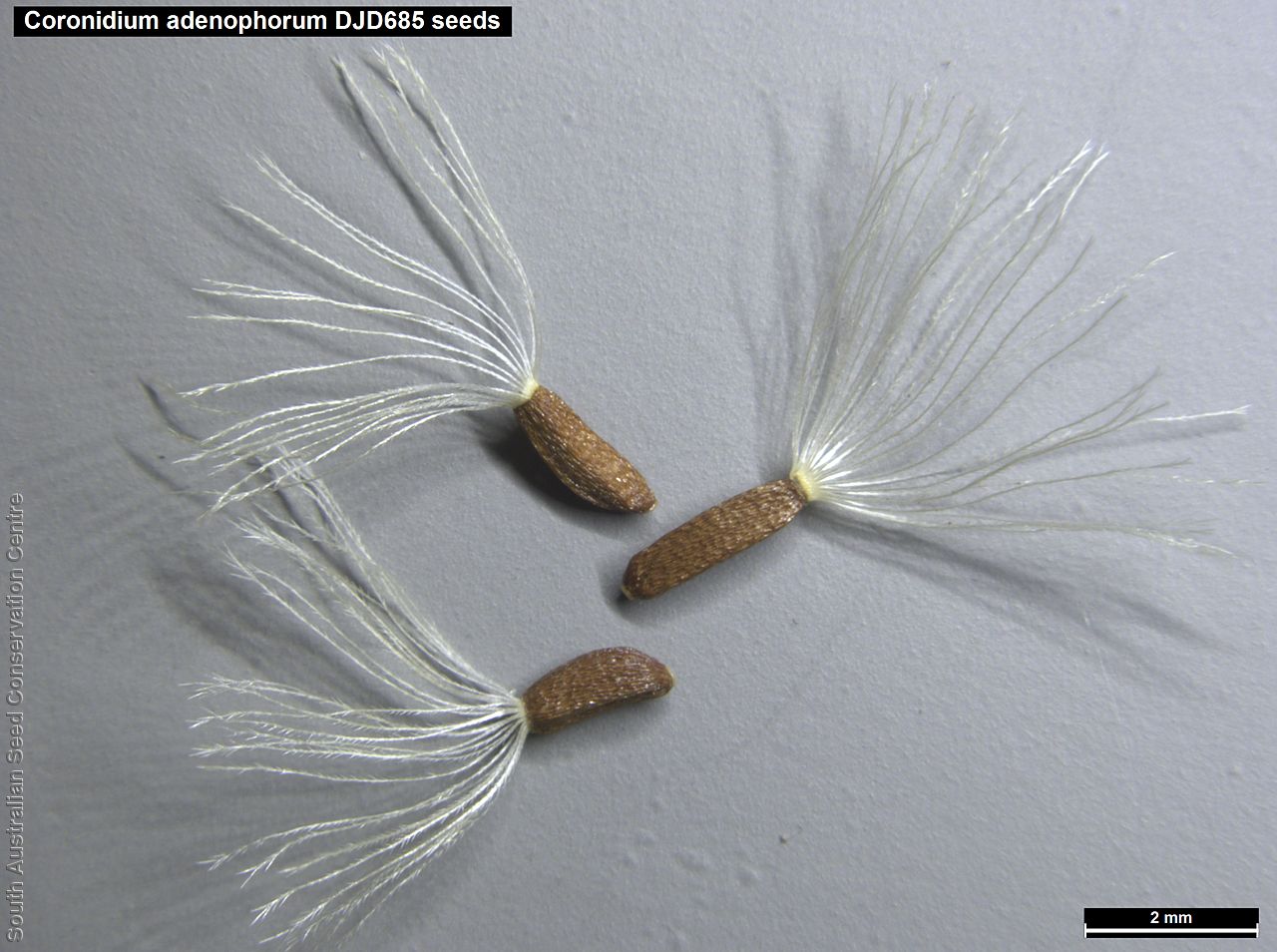
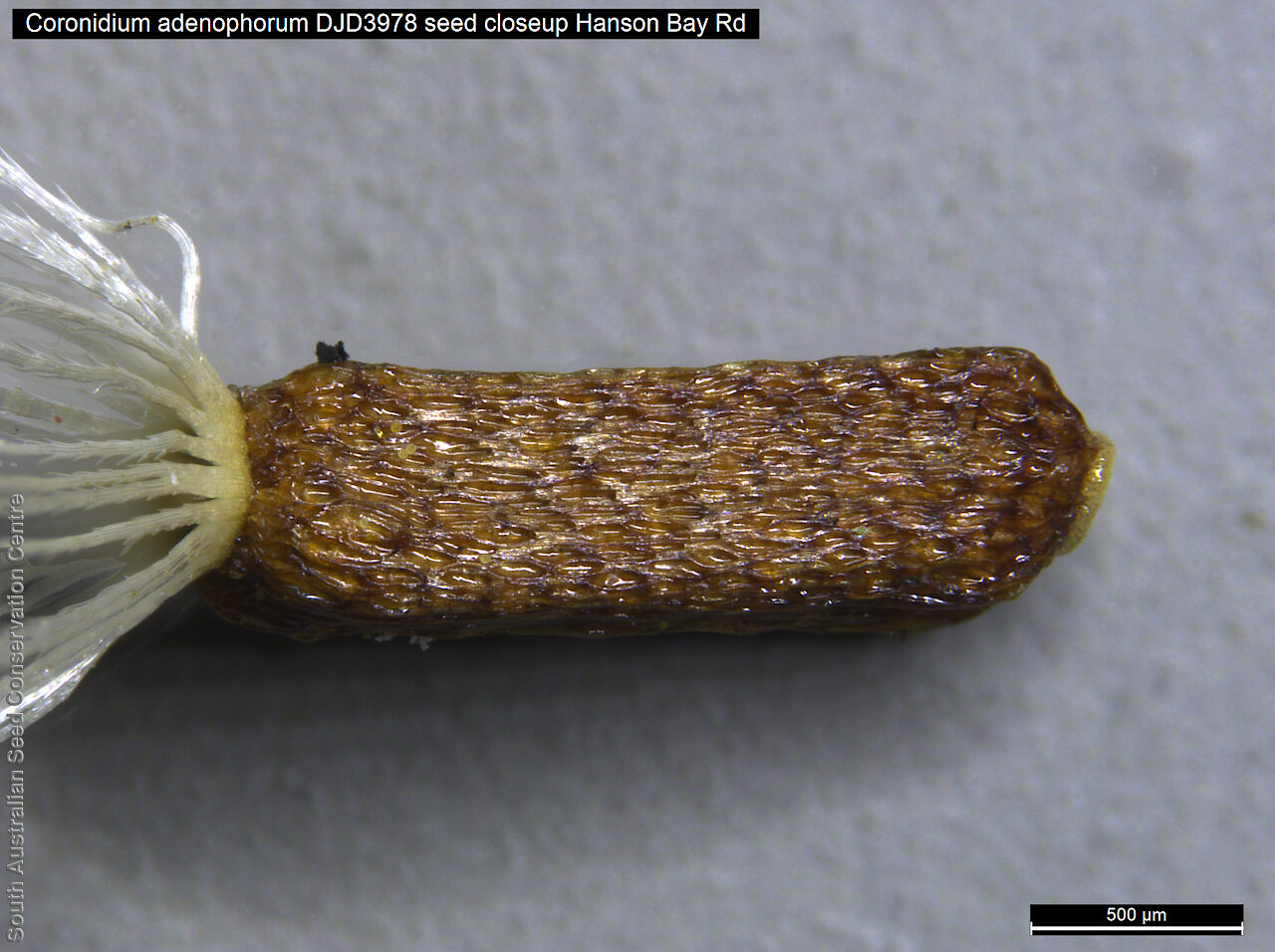
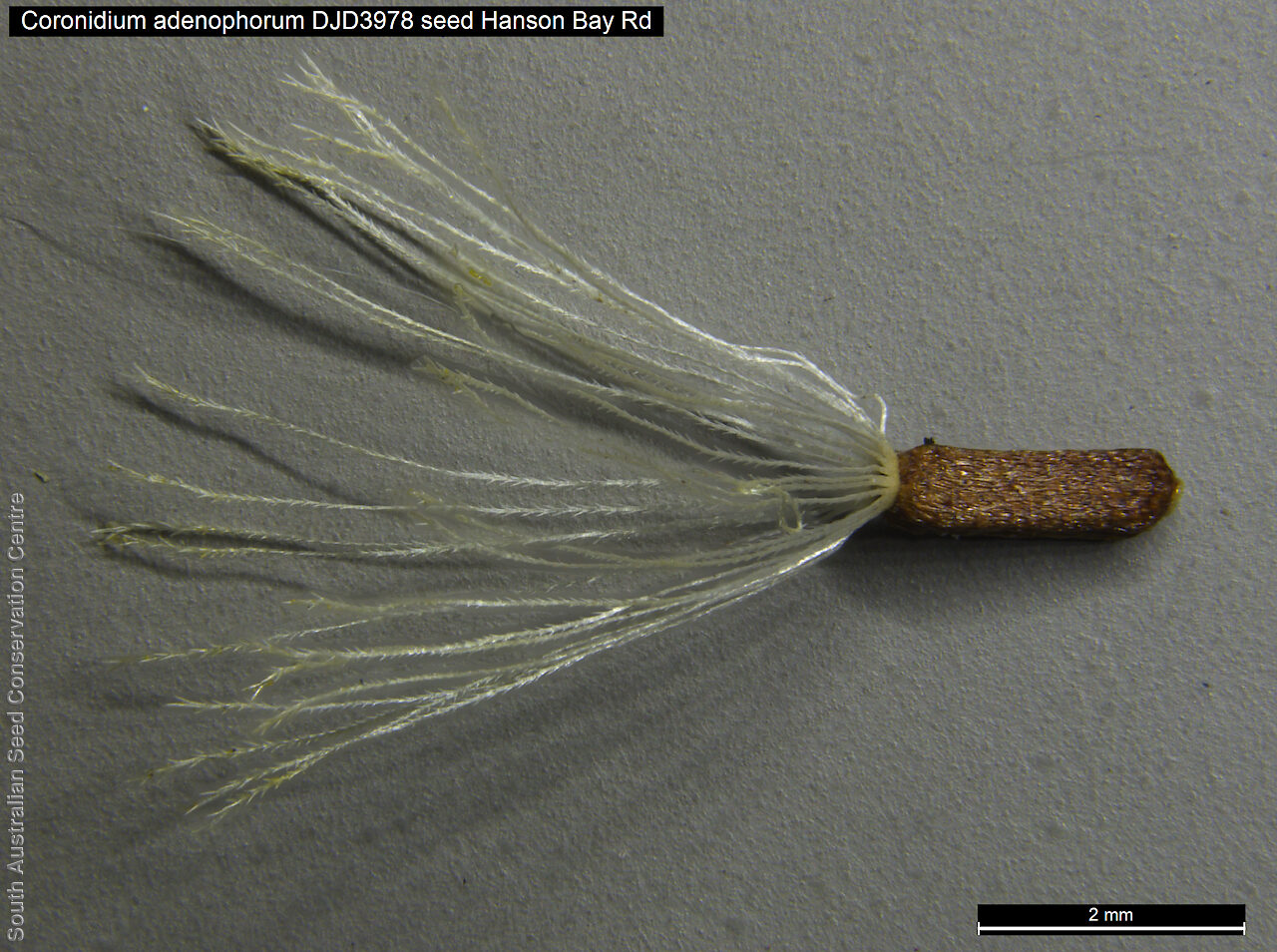
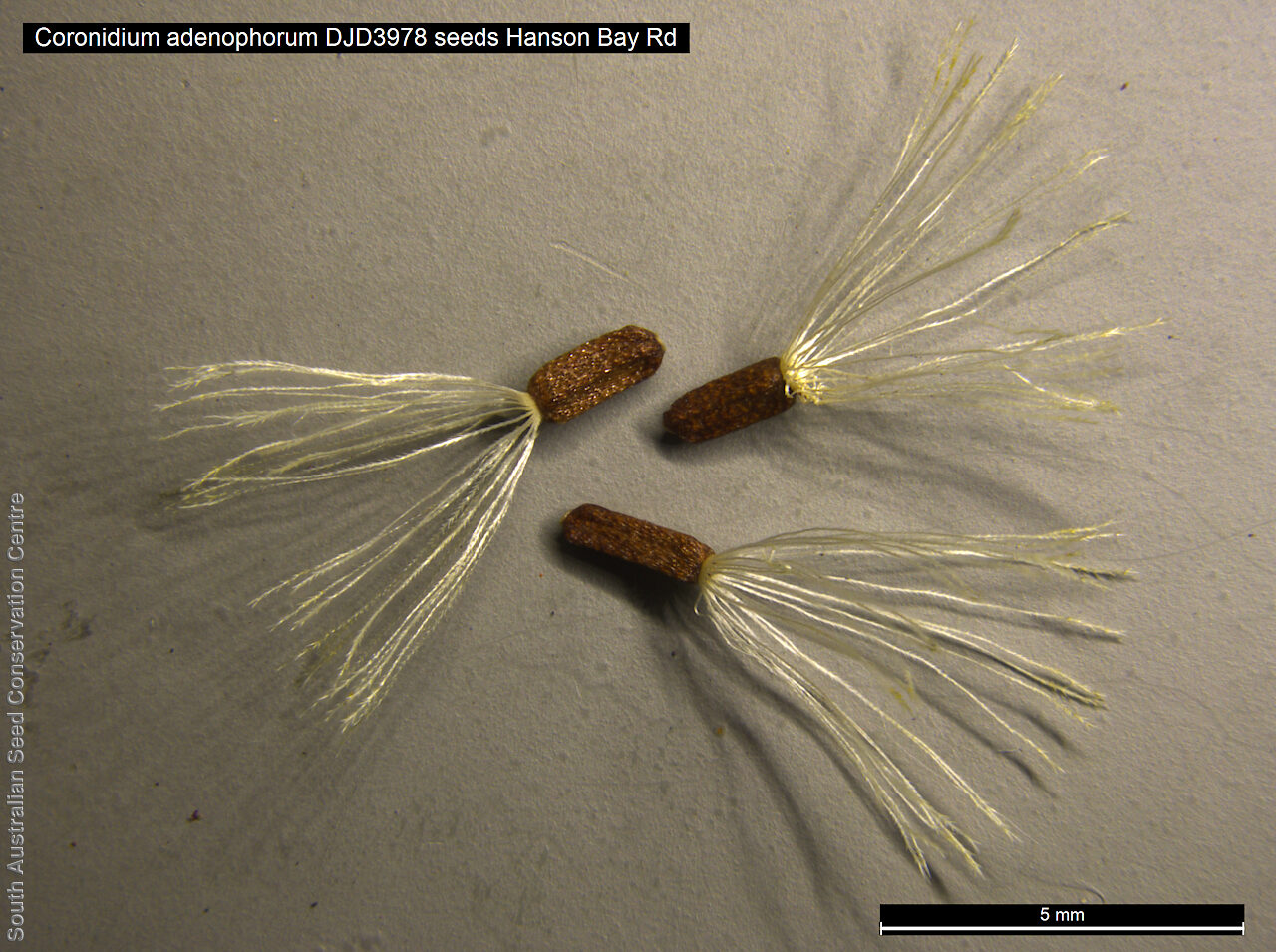

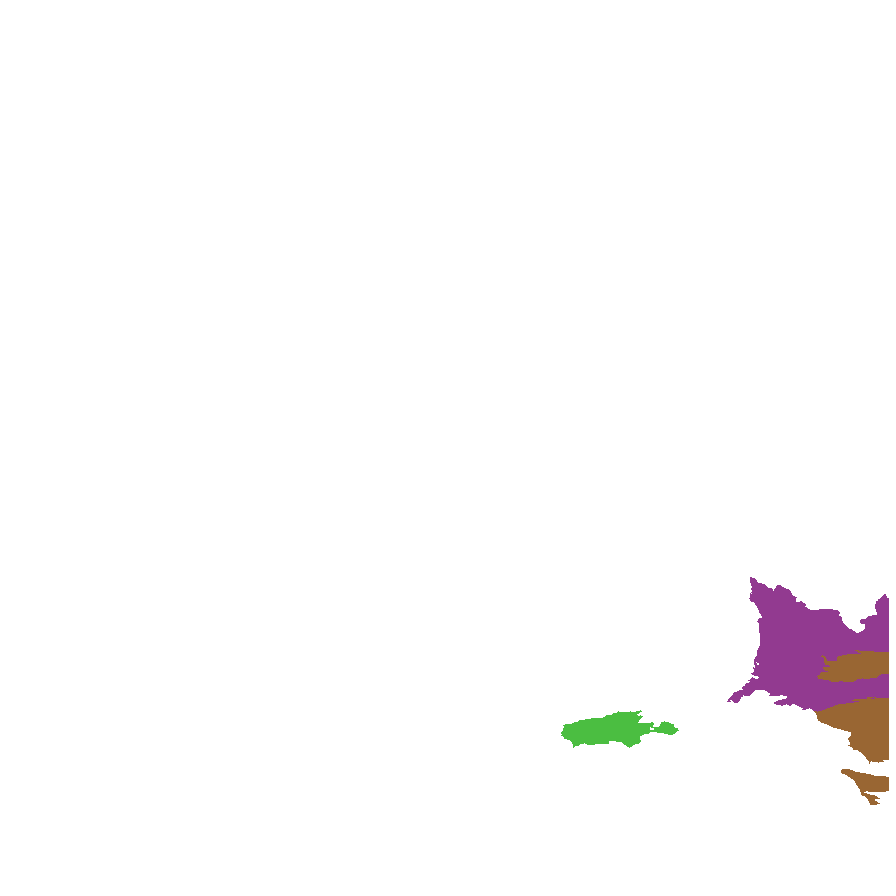
Botanical art
Prior names
Helichrysum adenophorum var. adenophorum
Etymology
Coronidium from the Greek 'korone' meaning a crown and the diminutive '-idion'; referring to the short pappus crown that in the Coronidium oxylepis group of species remains on the cypsela after the pappus bristles have broken near their base and fallen away. Adenophorum meaning to bear or produce glands; referring to sticky glands on the stems and leaves.
Distribution and status
Found on Kangaroo Island and in the Murray in South Australia, growing in heath or woodland where it readily regenerates from seed after fire. Also found in Victoria. Native. Uncommon in South Australia. Rare in Victoria. More common post fire.
Herbarium regions: Murray, Kangaroo Island, South Eastern
NRM regions: Kangaroo Island, South Australian Murray-Darling Basin, South East
AVH map: SA distribution map (external link)
Plant description
Erect, single-stemmed annual or biennial herb to 50 cm high. Stem glandular-hirsute. Leaves sessile, linear, to 6 cm long, glandular-hirsute and scabrous above, with sessile and stipitate-glandular hairs below, margins recurved, apex acuminate, base slightly auriculate. Flower-heads solitary, to 4.5 cm diameter, closely subtended by several leafy linear bracts with white (or pink in bud) daisy-flower. Flowering between October and March. Fruits are dried papery daisy-head. Seeds are brown oblong seed to 2 mm long and 1 mm wide, with long white feather-liked pappus. Seed embryo type is spatulate.
Seed collection and propagation
Collect seeds between December and May. Collect whole heads that are drying off or collect just the seeds by plucking it out of the centre of the daisy-flower with your fingers. Mature seeds are easily removed. Place the heads in a tray for a week to dry. Then pluck the seeds from the head with your finders. Viable seeds will be fat and brown. Store the seeds with a desiccant such as dried silica beads or dry rice, in an air tight container in a cool and dry place. From one collection, the seed viability was average, at 60%. This species is considered a fire responsive species.
| Location | No. of seeds (weight grams) | Number of plants | Date collected | Collection number Collection location | Date stored | % Viability | Storage temperature |
|---|---|---|---|---|---|---|---|
| BGA MSB | 9,000 (8.77 g) 9,000 (8.77 g) | 100+ | 11-Dec-2006 | DJD685 Kangaroo Island | 1-Aug-2007 | 60% | -18°C |
| BGA | 23,700 (11.130 g) | 50+ | 11-Jan-2021 | DJD3978 Kangaroo Island | 28-Jun-2021 | 90% | -18°C, -80°C |
Number of plants: This is the number of plants from which the seeds were collected.
Collection location: The Herbarium of South Australia's region name.
% Viability: Percentage of filled healthy seeds determined by a cut test or x-ray.